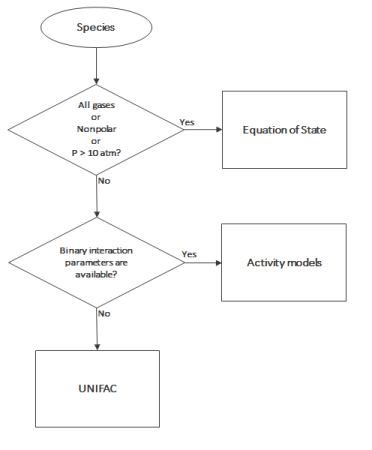There are methods to choose the appropriate thermodynamic models; see Ref. 78. This choice depends on the nature of the property, composition of the mixture, operational pressure and temperature, and availability of model’s parameters for the simulation; see
Ref. 79. Below is a decision tree that can be used as a guide for choosing the thermodynamic model:

All the parameters and temperature-dependent properties are saved inside a <Compound CompID="name"></Compound> block. For example, to edit the acentric factor of methane from 0.01141 to 0.2 perform the following steps
Here Tlb and T
ub defines the lower and upper bound for a temperature range, and a
1 to a
4 are the corresponding coefficients for a cubic polynomial as f(T) = a
0 + a
1T+ a
2T
2+ a
3T
3 fitted for that range. Multiple sequential ranges can be added by appending temperature ranges and coefficient sets. The
<Data></Data> block can be used to input data points directly.

